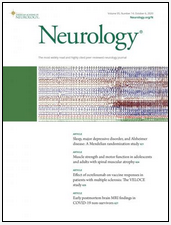 Spinal muscular atrophy is the second most common neuromuscular disease in children but also affects adults. Due to a genetically determined deficit in SMN protein, SMA can lead to paralysis of the limbs and trunk, respiratory disorders and orthopedic complications, especially if it occurs early. There are four types (from I to IV) depending on the age of onset of symptoms and the maximum motor and functional skills. The question of the progression of the disease remains unanswered despite numerous natural history studies carried out in several age groups. This notion of upgradability is important to consider at a time when three innovative therapies have been authorized.
Spinal muscular atrophy is the second most common neuromuscular disease in children but also affects adults. Due to a genetically determined deficit in SMN protein, SMA can lead to paralysis of the limbs and trunk, respiratory disorders and orthopedic complications, especially if it occurs early. There are four types (from I to IV) depending on the age of onset of symptoms and the maximum motor and functional skills. The question of the progression of the disease remains unanswered despite numerous natural history studies carried out in several age groups. This notion of upgradability is important to consider at a time when three innovative therapies have been authorized.
In an article published in July 2020, Dutch researchers report data from a natural history study conducted in 250 adults (median age 27) with SMA (types Ic to IV) and with a particular interest muscle strength (using the modified Hammersmith scale or HFMSE) and motor neuronal loss measured by electromyography (CMAPmax). The authors observe a linear decline in strength over time, but also phases of slower upgradability or even plateau phase. This linearity is not correlated with the CMAP which remains much more stable. Finally, the HFMSE scale is neither free of flaws nor of shortcomings in this population, and this is why a score calculated from data from classical muscle testing is preferred.
